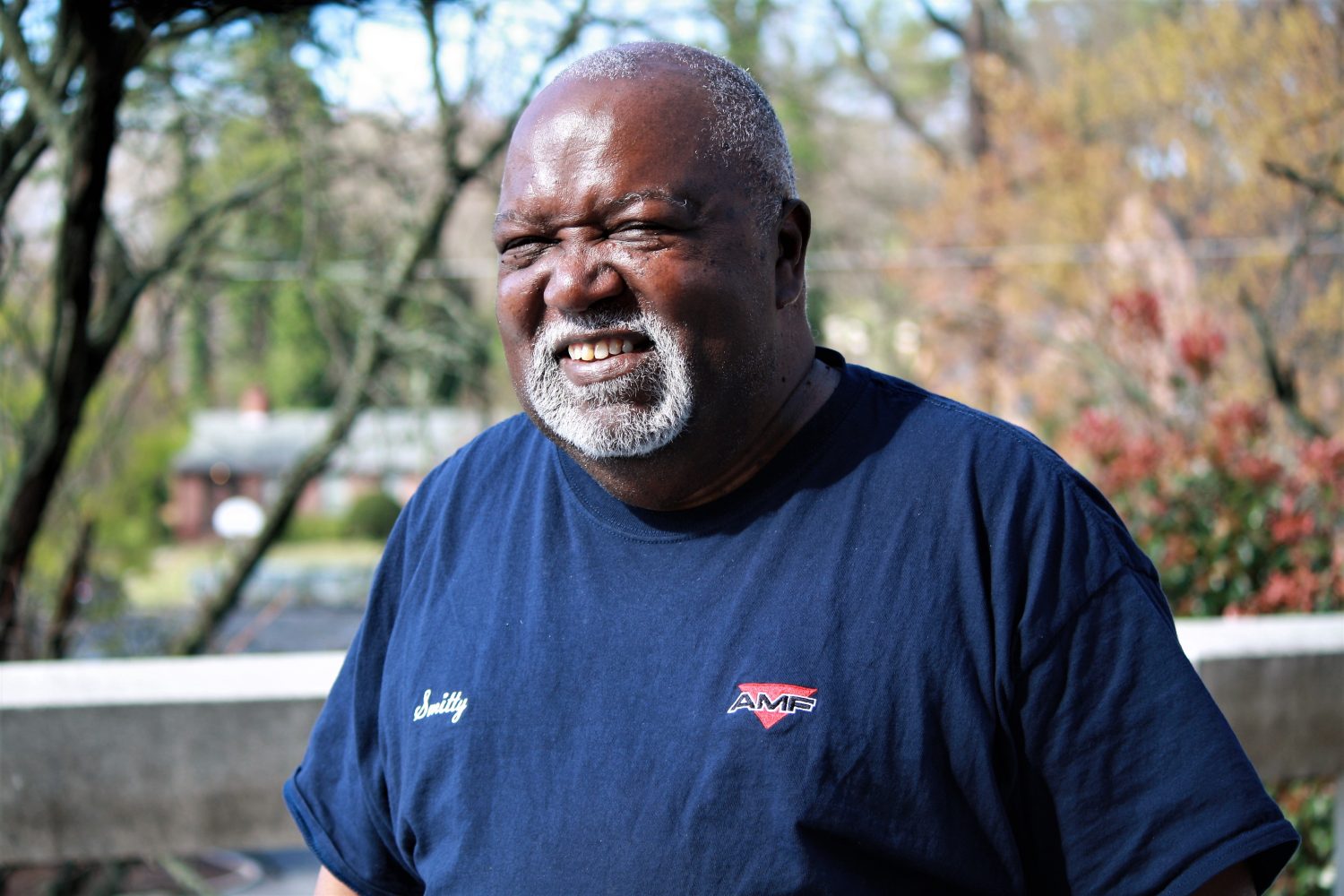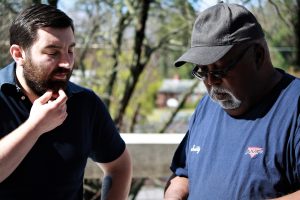By Jason Villafranca

Robert Smith, Jr., who grew up on Washington Street in the Church Hill neighborhood, remembers when Church Hill, and Richmond, were segregated. (Photo by Rebecca Fisher)
The story of Richmond, Virginia spans the full history of the United States, from the Virginia colony to today, and the city is no stranger to the deep historical roots of poverty and racial division in this country. The former capital of the Confederate States of America, Richmond is dotted with grand statues of Confederate icons such as General Robert E. Lee and its president, Jefferson Davis.
No Richmond neighborhood played a more substantial role in the segregation of races than Church Hill, home of Robert Smith, Jr. (above). The oldest neighborhood in Richmond, Church Hill is located on a bluff overlooking the James River at the east end of the city. As post-Civil War Richmond recovered, then expanded in the 19th and 20th centuries, white residents moved en masse west along Broad Street, leaving Church Hill’s historic streets and churches to an impoverished black population bound by a host of discriminatory laws and ordinances.
Born in 1949, Robert Smith experienced first-hand that historical ebb and flow, from the afterglow of Richmond’s early 20th century black renaissance led by towering community figures such as Maggie Walker [Link] to what is now a case study on poverty and urban blight. Robert’s first home at 1922 Washington Street (Figure 1, below) was originally built in 1906 but no longer exists (Figure 2, below). In its place stands the Martin Luther King Jr. Middle School, founded in 1964.

Figure 1: Historical Washington Street (circled in red) as it appeared on a map of Richmond in the 1950’s. (Church Hill People’s News)

Figure 2: The land occupied by Smith’s Washington Street home (circled in red) is now the site of a public middle school. (Google Maps)
Robert fondly recalls after-school activities with family and friends, playing stick ball, basketball, football, and “old school” roller skating, meaning that he had to use a screwing tool to strap skates to his feet. On his weekends, Robert would take his roller skates to a hangout called the Arena to skate with friends.
At that time, the Arena was racially segregated, but when the grownups weren’t looking, “white and black kids mixed and just enjoyed their weekends,” Robert said with a laugh. Back then, Robert didn’t see segregation as an unacceptable practice: He grew up with it, was molded by it, and learned how to cope. “You just had to adjust to your environment, you know?”

Robert Smith shows Jason Villafranca pictures of his son, a U.S. Navy veteran. (Photo by Rebecca Fisher)
By the time Robert was nineteen he was married and had two children. He worked two jobs to support his family, running errands between shifts. Since his early twenties, Robert has worked at a company on Laburnum Avenue, AMF Bakery Systems. He worked his way up from a janitorial position to having his own workshop, where he’s honed his skills as a machinist for the past 49 years. He is pondering retirement, but is not entirely sure yet.
The history of Church Hill is a painful reminder of what segregation can do to entire population of people. Robert’s story of growing up in Church Hill, an area currently undergoing gentrification, is remarkable. And while racial discrimination and segregation is rightly condemned by those of us who view it from the outside, to those who lived it, including Robert, it was just a day in the life.
TO LEARN MORE:
Evans, Jessica. 2015. What is Church Hill, and How Has it Changed Over Time? Virginia Commonwealth University, Richmond, VA. http://arts.vcu.edu/madeinchurchhill/2015/01/09/what-is- church-hill-and-how-has-it-changed-over-time/. Accessed 2017.04.07.
Google Maps. 2017. https://www.google.com/maps/@37.5424659,-77.4201955,1112m/data=!3m1!1e3. Accessed 2017.04.07.
M, John. 2009. The Church Hill North Historic District. Church Hill People’s News. https://chpn.net/2009/09/03/the-church-hill-north-historic-district/. Accessed 2017.04.07.

Comments are closed.